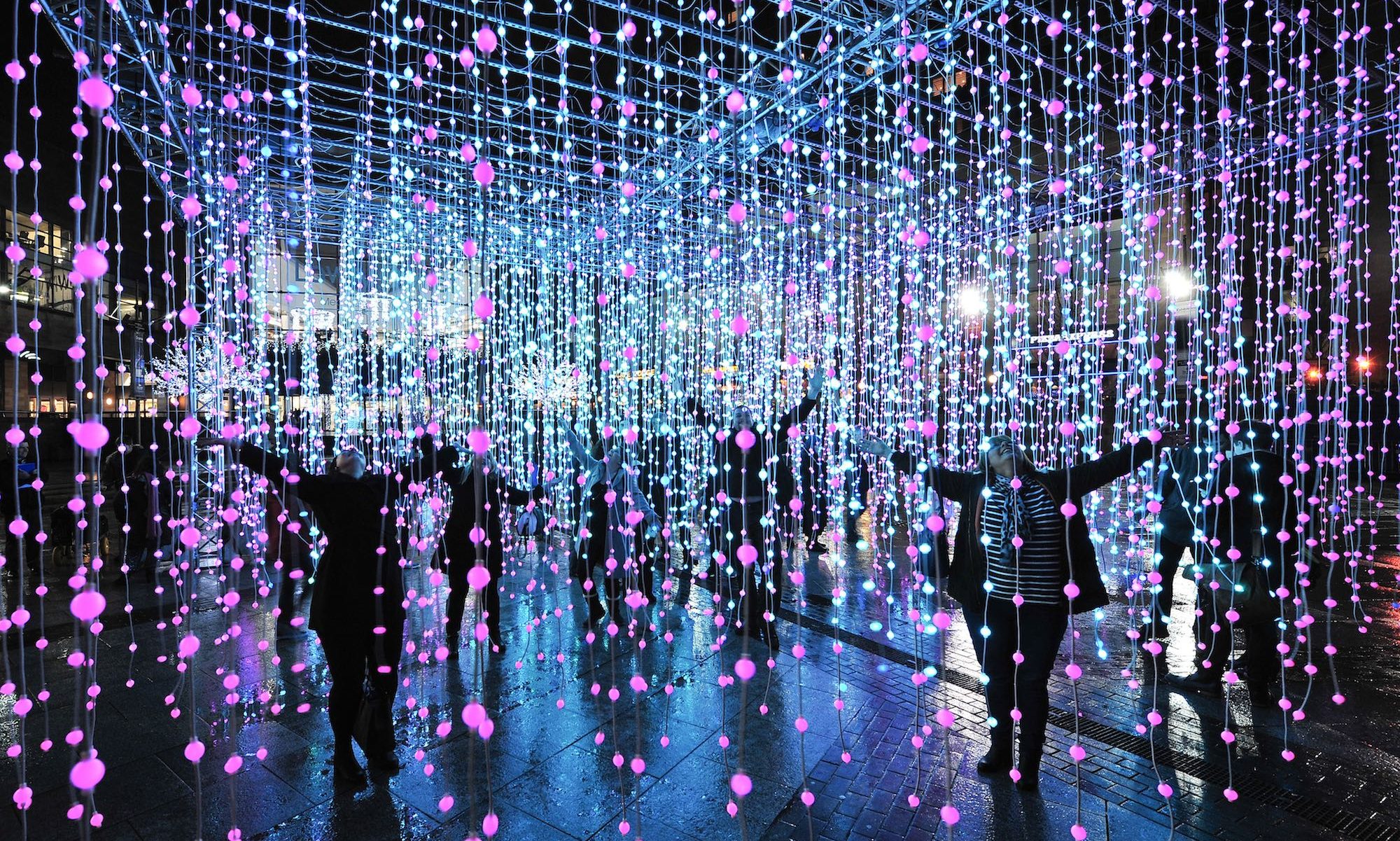Charlie Brooks
My finished work, titled “Suspended Paradise”, was a composition using light, colored acrylic, wood, and monofilament line:

The work consists of a number of laser-cut acrylic shapes suspended inside of a wooden base. There is a flashlight located behind the shapes that casts a “shadow” on the wall, creating an image of a tropical beach, complete with a sunset and palm tree.

My work was intended to be viewed from behind, aiming to capture both the acrylic and the resulting image in one frame. My goal from the beginning was for the hanging acrylic to be visually pleasing on its own, meaning that the work could be appreciated with or without the light. As a part of this objective, I wanted to use a clear acrylic base so that the acrylic could be seen, but the acrylic sheet was too flimsy to be a viable option. The height/relationship/positioning of the acrylic pieces was vital to the quality of the resulting image.
I maintained the position of the wooden base on the table by taping it down. There is a groove in the table top that perfectly cradles the flashlight, and I centered this groove on the base so that the image would be centered. The wooden base also “framed” the resulting image, creating a perfect rectangle of light for the painting to sit in.

If I could make changes to my project with access to more resources (larger budget, designated site to install a work, more time), I would suspend the acrylic from either the ceiling or a clear acrylic base so that they could be appreciated without the light. Also, I would make the entire piece larger so that the fishing line isn’t as significant in the final image. Finally, I would like to have used more individual acrylic shapes. I limited myself somewhat when I only made a 5×6 grid of holes to suspend the shapes. If hanging from a ceiling, I could position the pieces in an unlimited number of positions, and could use a larger number of pieces. Also, I could control better the distance from the light to the acrylic to the wall, meaning I could scale the final painting to my liking.
Overall, I am happy with how my final work came out. The final image had a nice balance of abstract qualities and defined shapes that properly conveyed what I intended for the final image to be. The process of problem solving over time helped ease the stress when it came to final assembly, as I knew that my concept worked and I just needed to assemble it.

























